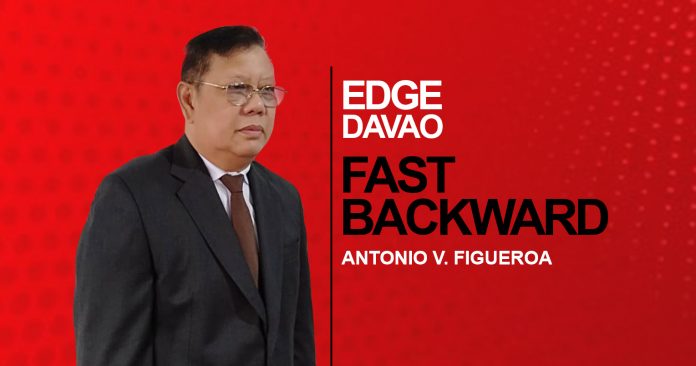If history belongs to the victors, so are the streets named after them. In Davao City, for instance, this reality was introduced when the colonizers took over as administrators. Except for San Pedro, a road at the center of religious, political, and commercial events, all the other streets opened during the Spanish period (1848-98) were named in honor of Spaniards who contributed to the colonial agenda of Spain in South America, Cuba, and the Philippines.
Overall, there were ten city streets—most of them fit the classification of a dirt road or trail at the time of its opening—have Spanish provenance. Most of the roads, though, have been renamed in an apparent display of historical oversight on the part of local legislators.
Eight of the roads are after Spanish profiles such as Federico Garcia y Escario, Simon Anda y Salazar, Miguel Lopez de Legazpi, Narciso Claveria y Zaldua, Don Jose Oyanguren y Cruz, Francisco Gonzalez Pizarro, Hernán Cortés de Monroy y Pizarro, and Fernando Magallanes.
San Pedro, a thoroughfare and Davao’s patron saint is named after Oyanguren’s parish where he was baptized. Its feast day falls on June 29, the dedication of Davao after its conquest from Moro chief Datu Bago. Edward R. Bolton Street, named after an assassinated Davao governor, was first known as Calle Nueva. It is now officially known as Paciano Bangoy Street.
Jose Oyanguren y Cruz, an ex-judge of Tondo, Manila, is credited for conquering Datu Bago, the ruler of the Davao River. Recognized as the last Spanish conquistador and the first Spanish governor of Davao. The thoroughfare is now known as Ramon Magsaysay Avenue.
Narciso Claveria y Zaldua is best recalled as the Spanish governor-general who approved the Oyanguren expedition to subdue Datu Bago and the man who issued Catalogo Alfabetico de Appellidos, a book of surnames for use in the Philippines and the Spanish East Indies.
Fernando Magallanes (Fernão de Magalhães y Mezquita), a Portuguese explorer who denounced his citizenship in 1517 in favor of Spain, discovered the Philippines on March 16, 1621. He led the 1519 Spanish expedition to the East Indies but died in the Battle of Mactan that same year. The road christened in his honor is now renamed Antonio Pichon Sr.
Miguel Lopez de Legazpi was the financier of the Spanish voyage to conquer the Philippines in the mid-16th century. He set up the first Spanish settlement in the East Indies and was the first governor-general of the Spanish East Indies with Cebu, and later Manila, as the capital. The road named in his memory is now called Pantaleon Pelayo Sr.
Simon Anda y Salazar, a judge (oidor) of the Royal Audiencia, was a lieutenant governor who was appointed by the Spanish governor-general of the Philippines during the British occupation of Manila. He established a Spanish provisional colonial government and army in Bulacan and was acting governor of Manila. The street named in his honor is now known as Feliciano Iñigo Street.
Federico Garcia y Escario started his military career in the country. He joined the Third Carlist Civil War, was injured in Puente la Reina, where he earned the rank of lieutenant, and was part of the Battle of Lácar and Lorca (1875) and in the Siege of Bilbao, Spain. He also fought in Cuba. The road named after him was renamed Ponciano Reyes and is now known as Cayetano Bangoy Street.
Francisco Gonzalez Pizarro is a Spanish conqueror who founded the first Spanish town in Peru and seized the Incan emperor Atahualpa at the Battle of Cajamarca in 1532. The street (traversing the police barracks) named in his memory is informally known as San Pedro Extension.
Hernán Cortés de Monroy y Pizarro Altamirano was a Spanish conquistador that subjugated the Aztec Empire and part of mainland Mexico. For overthrowing the empire, he was given the title of Marquess of the Valley of Oaxaca. The road named in his honor has since been renamed Andres Bonifacio Street, after the founder of Katipunan.




